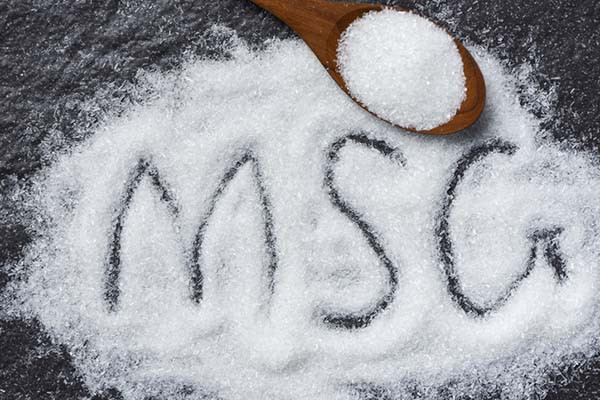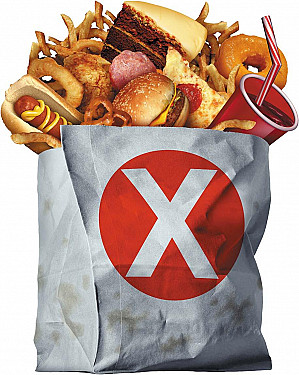Monosodium glutamate (MSG): What it is, and why you might consider avoiding foods that contain it
- Reviewed by Howard E. LeWine, MD, Chief Medical Editor, Harvard Health Publishing; Editorial Advisory Board Member, Harvard Health Publishing

Monosodium glutamate (MSG) may be most commonly associated with Chinese food, but this odorless, crystalline additive is used throughout the restaurant industry, and is even added to many packaged foods you may be eating. But what exactly is MSG? And why might you consider avoiding foods that contain it?
What is MSG?
MSG is a flavor enhancer that's frequently added to canned vegetables, soups, deli meats, and restaurant foods to lend a savory, rich flavor. It's made from sodium and L-glutamic acid, a nonessential amino acid that occurs naturally in umami-rich foods like tomatoes, anchovies, mushrooms, and Parmesan cheese.
A Japanese chemist named Kikunae Ikeda extracted glutamate from an umami-rich seaweed broth to produce the first man-made MSG in 1908. Today, MSG is made by fermenting starch, sugar beets, sugar cane, or molasses into an odorless white powder that can be sprinkled into your food like table salt. And while MSG is frequently associated with Southeast Asian cooking, it's an ingredient that's used in various types of cooking around the world.
Why is MSG added to certain foods?
MSG intensifies and enhances umami flavors in soups, sauces, broths, and other foods. On its own MSG doesn't taste like anything, but it lends a savory, meaty flavor to foods it's added to, making it a popular additive for both restaurant and home chefs.
While the FDA considers the addition of MSG to foods to be "generally recognized as safe," it still requires food manufacturers to list MSG on the ingredient panel. You'll see it listed as monosodium glutamate. And if a food includes any ingredient that contains naturally occurring MSG (such as yeast extract, hydrolyzed yeast, or protein isolate) it cannot claim "no MSG" or "no added MSG" on its packaging.
What foods are more likely to contain MSG?
Although Chinese dishes are often associated with MSG, many non-ethnic restaurants (and fast-food joints) also use MSG to flavor their food. MSG is also found in many processed and packaged foods, and in many hot dogs and lunch meats. Condiments like salad dressing, mayonnaise, ketchup, and barbecue sauce also frequently contain MSG, as do packaged seasoning blends, frozen pizzas, and instant noodles.
Is MSG bad for you?
In the 1990s, the FDA asked the Federation of American Societies for Experimental Biology (FASEB) to look into the safety of MSG. FASEB concluded that MSG is safe. They noted that any ill effects were mild and short-lived, and were typically associated with large doses (more than 3 grams) of MSG that were consumed without food.
Most people don't ingest MSG on its own, and since most recipes call for a scant amount — 1/4 to 1/2 teaspoon per pound of meat (enough to feed four to six people) — it's unlikely you'd consume it in high enough quantities to be affected.
Who is at increased risk for having an adverse reaction to MSG?
While most people can eat a meal with MSG without issue, a small subset — less than 1% of the general population — may be particularly sensitive to MSG. Symptoms typically appear in the first two hours after consuming foods with MSG, and can include headache, skin flushing, sweating, nausea, numbness, and fatigue. An even smaller subset of people have a serious allergic reaction.
Why to consider limiting foods with MSG
While MSG itself likely doesn't deserve its reputation as a toxic ingredient, there are reasons to avoid eating foods with MSG. Foods that contain MSG are often highly processed convenience foods that contain high amounts of sodium, fat, and other refined ingredients that aren't good for us. Seeing monosodium glutamate on an ingredients list should prompt you to look at the other ingredients included — and to consider trying to make that food at home, or to seek out a healthier alternative instead.
How much sodium does MSG contain?
While it may be best to avoid or reduce packaged foods containing MSG, the flavor booster could actually help you reduce the amount of sodium you consume when cooking at home. Despite having "sodium" in its name, monosodium glutamate contains only 12.28 grams of sodium per 100 grams. That's about one-third of the sodium found in table salt (39.34 grams/100 grams).
If you replace 1/2 teaspoon of table salt with the same amount of MSG, you'll reduce the sodium content in your food by about 37%, without losing much flavor. As a home cook, that means using MSG could help enhance the perception of saltiness while reducing the actual sodium content in your food.
Bottom line: Take the claims around MSG with a grain of salt
Is MSG bad for you? Eaten in small amounts and as part of a meal, MSG likely won't have a negative effect, so long as you're not one of the small subset of people who are sensitive to it. But since it's often used in conjunction with other, less-healthy or highly processed ingredients, you may want to limit your consumption of it and skip the ultra-processed foods where it's often found.
About the Author

Lindsay Warner, Content Licensing Editor, Harvard Health Publishing
About the Reviewer

Howard E. LeWine, MD, Chief Medical Editor, Harvard Health Publishing; Editorial Advisory Board Member, Harvard Health Publishing
Disclaimer:
As a service to our readers, Harvard Health Publishing provides access to our library of archived content. Please note the date of last review or update on all articles.
No content on this site, regardless of date, should ever be used as a substitute for direct medical advice from your doctor or other qualified clinician.















